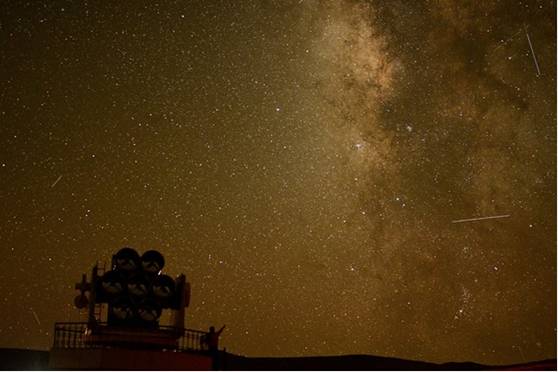Astronomy enthusiasts from across India converged at the Hanle Dark Sky Reserve (HDSR) in eastern Ladakh between September 18 and 23 for the third edition of the HDSR Star Party. The event, jointly conducted by the Indian Institute of Astrophysics (IIA), the Department of Wildlife Protection of UT Ladakh, and Bhabha Atomic Research Centre (BARC), showcased amateur astronomy and astrophotography activities.
Known for its exceptionally dark skies, the HDSR was officially notified by the UT Ladakh government in December 2022. The reserve aims to curb light pollution and promote astro-tourism benefiting local communities. It is centred around the Indian Astronomical Observatory at Hanle, operated by the IIA under the Department of Science and Technology (DST), Ministry of Science & Technology said in a statement.
The Star Party brought together participants from Karnataka, Tamil Nadu, Madhya Pradesh, Gujarat, Delhi, Jammu and Kashmir, Maharashtra, Andhra Pradesh, and Kerala. Attendees included both seasoned astrophotographers and newcomers who travelled at their own expense to experience Hanle’s Bortle-1 skies over four nights.
“Hanle occupies a unique position within India’s amateur astronomy community. Its pristine dark skies and transparent atmosphere allow observing and photographing faint celestial objects that are often impossible from other locations in India,” said Prof. Annapurni Subramaniam, Director of IIA.
Participants attended masterclasses on astrophotography, celestial sights unique to Hanle, and visual observing, including a session on the “7 Wonders of the HDSR Night Sky” compiled by Ajay and Neelam Talwar. Due to the reserve’s high altitude of 4,250 metres and low oxygen levels, daily medical checks were conducted.
Dr. Namrata Pathak, Scientist-G at DST, said, “It was a confluence of scientific and spiritual journey. The event highlighted the role of local communities, with 60 per cent of astro-ambassadors being women. Ethnoastronomy and folklores are being preserved for future generations.”
Thupstan Rinchen, Officer-in-Charge of BARC’s MACE Telescope, said participants focused on deep sky objects such as nebulae and galaxies, while beginners photographed the Milky Way. An Open Night on the final day attracted over 300 locals, tourists, and army personnel, who observed celestial objects through telescopes.
A key feature of HDSR is its 24 Astronomy Ambassadors, selected from local villages, trained as astro-tourism guides, and provided with telescopes. Dr. Niruj Mohan Ramanujam, head of outreach at IIA, said the ambassadors played a crucial role in the success of the Star Party.














